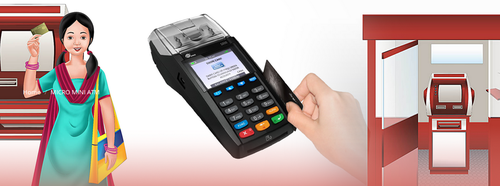Do you live in a rural area and can’t seem to find a bank that will service your local ATM? If so, you might want to think about setting up a mini ATM business of your own. That way, you can make a little bit of money from doing something that’s normally excluded from someone’s salary: banking. You can start small – as little as establishing an Automatic Teller Machine (ATM) in your office or home. The first time you open an ATM, you’ll want to do it under the guidance of a bank professional. But once you get the hang of it and have some experience running one, you can open an ATM on your own terms. All it takes is a little bit of capital and a plan — and even less time than you might think!
What is a Mini ATM Business?
A mini ATM business is a remote banking service that accepts cards from customers who have an account with the financial institution operating the machine. The customer can make a single trip to the ATM, check their account balance, and make a single withdrawal. That’s it! Sounds too easy, doesn’t it? The service may cost a bit more than your neighbourhood bank, but if you decide to go with a bank that doesn’t service your local area, you can make a small profit by running a remote banking service. And if you’re in a rural area and can’t seem to find a bank that will service your local ATM, you might want to consider setting up an ATM business of your own. That way, you can make a little bit of money from doing something that’s normally excluded from someone’s salary: banking.
How to Start and Grow a Mini ATM Business
- Starting and growing a mini ATM business in rural areas can be a profitable and impactful venture.
- The process of starting and growing a mini ATM business includes conducting market research, securing funding, obtaining necessary licenses and compliance, setting up and maintaining the mini ATM, and marketing the business. To conduct market research, entrepreneurs should identify the demand for financial services in rural areas, understand the competition and research existing mini ATM businesses in the area.
- Securing funding involves creating a detailed business plan and looking for funding opportunities available for small businesses in rural areas.
- Obtaining necessary licenses and compliance involves registering the business and ensuring compliance with all relevant laws, regulations, and standards.
- Setting up and maintaining the mini ATM involves purchasing or leasing the ATM, installing and setting up the ATM in a location that is easily accessible to customers and maintaining the ATM.
- Finally, marketing the business involves building a network of partners, using digital marketing tools and partnering with government schemes.
How to Choose the Right Site for Your Business
Once you’ve settled on a site for your ATM, the next step is to make sure it’s suitable. There are a few things to keep in mind: Is it something you can expand over time? Are there other expenses (such as electricity or maintenance) you’ll incur while you’re operating the machine? Do you have the right insurance? Are there any local, state, or federal laws that apply to your location?
Set Up Your First Mini ATM
Once you’ve determined the viability of a site and the need for an ATM, it’s time to get started. Set up your machine the same way you would any other machine: connect it to a power source, mark the internal usage as payment, and add signage. Depending on how often you’ll be using your machine, you may want to consider installing a machine ENGINEERED to increase the resale value of your machine.
Use Technology to runs your ATM Business
If you decide to use a computer to run your ATM business, there are a few things you’ll want to keep in mind. Is your computer virus and malware free? Have you installed any updates since the day you bought your computer? Are your passwords and account information stored securely? Are there any security risks associated with your computer?
Conclusion
A remote banking service is a great way to get money from your account when you don’t have access to a bank. There are many different types of remote banking services, and choosing the right one for your needs takes some research. You’ll want to determine if the fee is worth the convenience, as well as the protection you receive from using a virtual private bank. If you decide to go with a bank that doesn’t service your local area, you can make a small profit by running a remote banking service. And if you’re in a rural area and can’t seem to find a bank that will service your local ATM, you might want to consider setting up an ATM business of your own.





